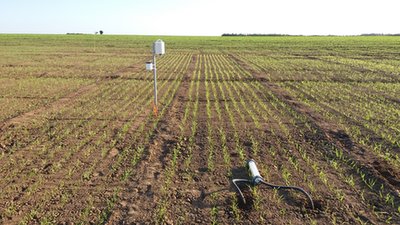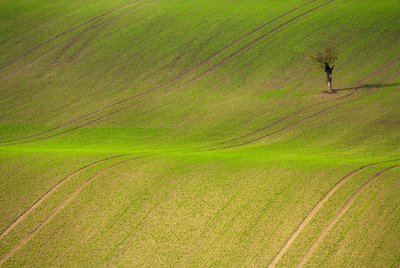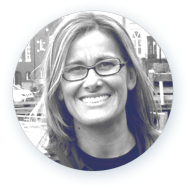INTERVIEW
‘We use a decision support system we’ve developed earlier as the starting point for the system we’re working on now. With a combination of IoT technology and satellite images, we aim to provide a very precise representation of what happens on the field in real time.’
The 8 devices installed at Arvalis’ test farm, the so called Digifarm, have collected data for over 10 months now. ‘Within our use-case, we focus on nitrogen and water availability. These are the main limiting factors in wheat production. The IoT systems we’ve placed in the field measure air humidity, temperature and soil water potential, amongst others. The satellite images provide information on crop reflectance and crop growth.’


The test field functions as a demonstrator, because farmers are invited to see the devices themselves. ‘Farmers are interested in results, in added value. Not so much in the raw data that we have now. Young farmers especially see the potential of our technology and they’re quite positive,’ Florence explains. ‘In the beginning we needed some time to figure out how to place the sensors on the field. They need to function in all weather conditions. We also needed to protect them from the farm machinery used in the field. The devices are quite robust now, I’m proud to say. All the data we’ve collected is fed into the system, so we hope to prove the added value to a wider audience soon. The system’s speed, precision and ease of use are the aspects that we work on now.’
'Less machinery in the field equals less fuel and less pressure on the soil.'
Even though the use-case focuses on wheat production, the combination of sensors on the field and satellite images has potential advantages for other crop cultivation processes as well. ‘We already share lots of information with agronomic experts in potato farming, for example. And in maize production, our decision support system for irrigation is useful. Around April or May next year, we will invite the other members of the arable trial to come and visit our test site.’
‘By the end of this project, I hope we have developed a system that helps farmers to operate even more precisely, and limits the need to enter the field with machinery. Less machinery in the field equals less fuel and less pressure on the soil. Nitrogen content and soil humidity is relatively easy to monitor. But what if we can extend this technology to help detect emerging diseases? I really think that the smart application of technology will help to increase the sustainability of our agricultural production processes.’
Partners in this use case:
Author: Renske Solkesz, Schuttelaar & Partners
use case
precision crop management
Florence Leprince
Head of European Affairs


